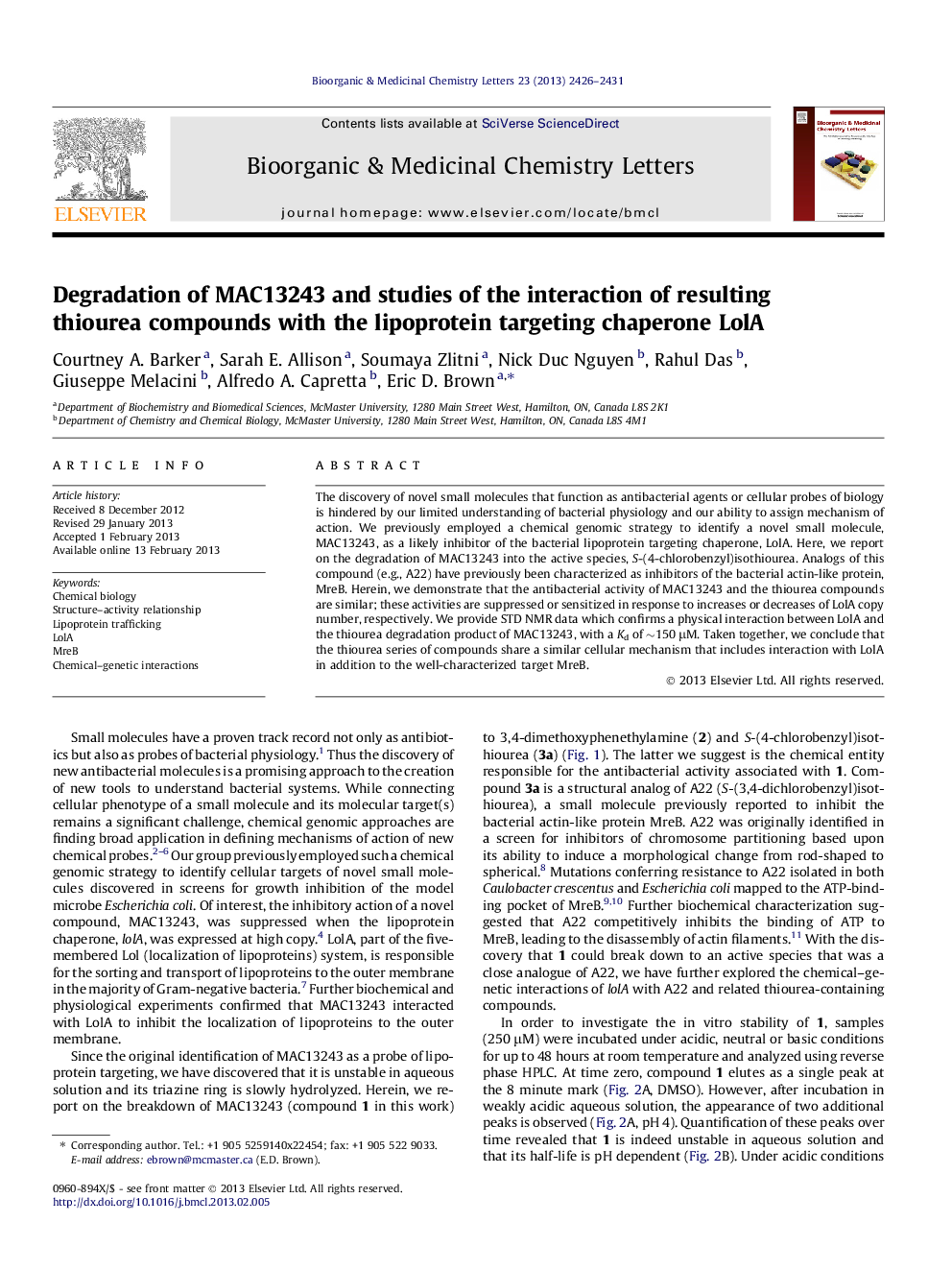| Article ID | Journal | Published Year | Pages | File Type |
|---|---|---|---|---|
| 10595994 | Bioorganic & Medicinal Chemistry Letters | 2013 | 6 Pages |
Abstract
The discovery of novel small molecules that function as antibacterial agents or cellular probes of biology is hindered by our limited understanding of bacterial physiology and our ability to assign mechanism of action. We previously employed a chemical genomic strategy to identify a novel small molecule, MAC13243, as a likely inhibitor of the bacterial lipoprotein targeting chaperone, LolA. Here, we report on the degradation of MAC13243 into the active species, S-(4-chlorobenzyl)isothiourea. Analogs of this compound (e.g., A22) have previously been characterized as inhibitors of the bacterial actin-like protein, MreB. Herein, we demonstrate that the antibacterial activity of MAC13243 and the thiourea compounds are similar; these activities are suppressed or sensitized in response to increases or decreases of LolA copy number, respectively. We provide STD NMR data which confirms a physical interaction between LolA and the thiourea degradation product of MAC13243, with a Kd of â¼150 μM. Taken together, we conclude that the thiourea series of compounds share a similar cellular mechanism that includes interaction with LolA in addition to the well-characterized target MreB.
Related Topics
Physical Sciences and Engineering
Chemistry
Organic Chemistry
Authors
Courtney A. Barker, Sarah E. Allison, Soumaya Zlitni, Nick Duc Nguyen, Rahul Das, Giuseppe Melacini, Alfredo A. Capretta, Eric D. Brown,
